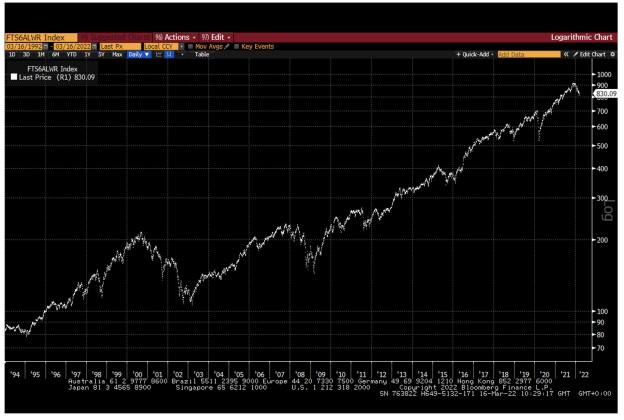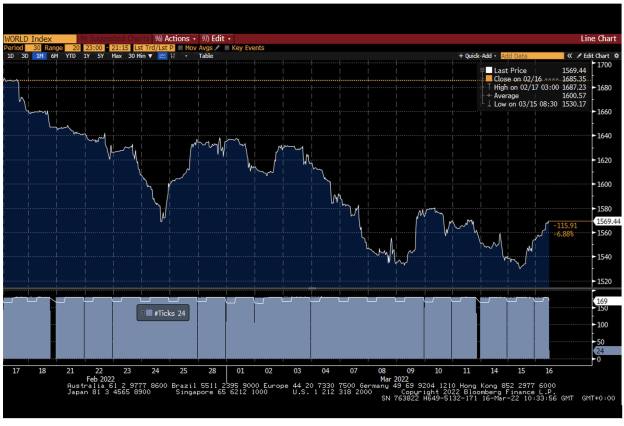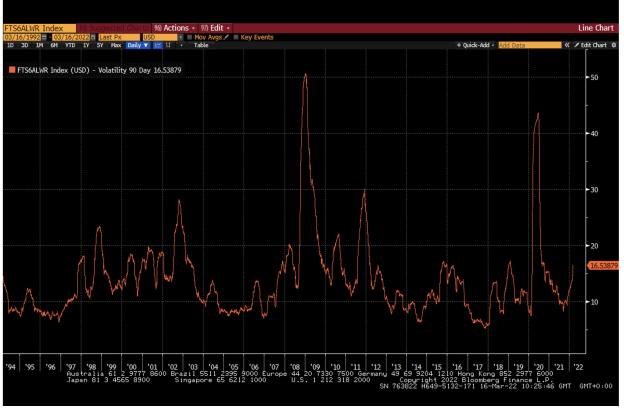
What can today's investors learn about volatility by examining historic trends?
Looking at the FTSE All World All Share Index (chart below) over the past 30 years, apart from a rather obvious three-year dip after the year 2000 and another in 2008, it resembles a fairly steady upward trend.
In fact it is similar to the drawing someone might produce trying to draw a 30-degree angle using a blunt pencil on rough paper.

However, when you zoom in the market over the past month, it looks like this:

I have used here the Bloomberg Global Equity Index as it prices continuously during the day, rather than once a day. The chart shows the index level every half hour.
This perhaps reminds us of issues about drawing maps – the coastline of Britain on a world map is quite cragged, but as you zoom in closer it looks no smoother.
Equities have a deserved reputation as being a volatile way to save. This volatility seems greater when looking at the short term than the long term, and this can be important for planning.
When individuals put money into the equity market, they are often in no hurry, selecting funds during the Isa season, having found that they have spare savings in their bank accounts.
At that time they would (hopefully) expect to invest for many years and not anticipate being in any rush to dispose of their holdings.
Unfortunately, for a few, accidents, emergencies and, indeed, death, can require a hurried sale at market low points such as 2008 or 2001-2003. Some will also sell then due to worry or excess reading of the financial press.
Enemy of the seller, friend of the buyer
My father told me about an investment book written by someone who had made good money in Wall Street in the 1920s. The investor was an amateur – indeed he was a waiter on cruise ships.
He claimed his investment success came from the fact that he only traded shares once every six months and the rest of the time he was unable to receive any market updates due to being on the high seas. History does not tell how he did in the 1930s.
Volatility is, therefore, the enemy of those who may be need to sell, but the friend of those who have a long-term investment horizon.
Here is the 90-day volatility of the FTA World Index over the past 30 years:

Not surprisingly, volatility spikes when markets fall due to major shocks – the global financial crisis of 2008 and the pandemic in 2020.
Higher volatility therefore does show periods perceived as high risk. However levels of volatility have remained in a fairly narrow range over the whole 30-year period.
The rise in volatility during bear phases shows that fortune favours the brave – if you want to invest at the exact bottom levels of market falls, there will be volatility and a level of panic in the air. Also, if you get your timing wrong and, say, invest three-quarters of the way through, expect to feel a bit of a fool for a while.





